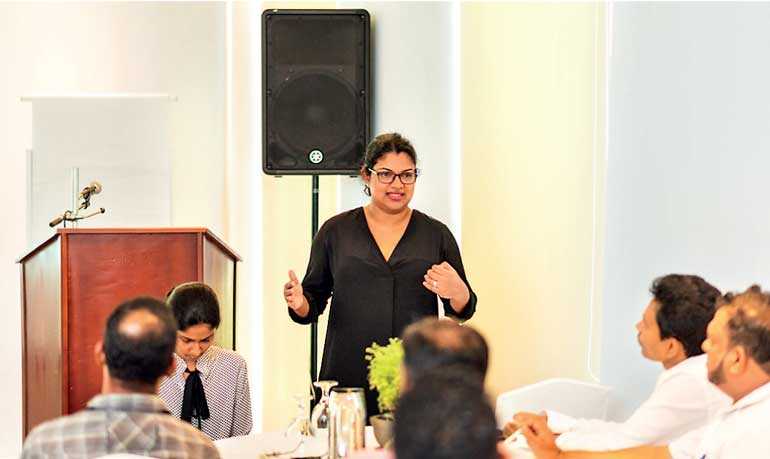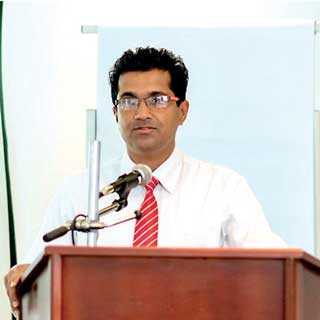Tuesday Dec 30, 2025
Tuesday Dec 30, 2025
Wednesday, 5 February 2020 00:00 - - {{hitsCtrl.values.hits}}

SLYCAN Trust Executive Director Vositha Wijenayake mapping out the scope and potential activities of the project
The Marine Environment Protection Authority (MEPA) of the Ministry of Environment and Wildlife Resources, in collaboration with SLYCAN Trust, recently organised a stakeholder consultation on mangrove ecosystem restoration and identifying the potential for community livelihood development in Gampaha district.
The consultation, held at The Gateway Hotel, Airport Garden Hotel, was attended by many local Government officers as well as officers from the Ministry of Environment. MEPA General Manager/CEO Dr. P.B. Terney Pradeep Kumara facilitated the event.
 |
| MEPA General Manager/CEO Dr. P.B. Terney Pradeep Kumara |
Mangrove forests are immensely productive coastal ecosystems. They filter carbon from the air, protect the shoreline, offer habitats for countless species of plants and animals, and provide raw materials for construction, food, handicrafts, or medicine. They are sites of stunning natural beauty, hold cultural significance, and can promote the wellbeing of local communities.
Twenty two species of Mangroves thrive along the coastline of Sri Lanka, but they have suffered destruction and degradation in the past. Restoring and expanding mangrove areas will reduce the impacts of climate change on Sri Lanka and support the sustainable development of coastal communities.
For the communities living around them, mangrove ecosystems offer many economic opportunities, from harvesting mangrove apples to investing in eco-tourism. The consultation aims to bring together relevant government agencies and stakeholders to map out ways to connect mangrove restoration and conservation to livelihood development and economic diversification in the district, especially in the selected site for restoration in Dikowita.
“Dikowita mangrove site is one that is degraded and is victim to pollution. It is important that a structured approach is implemented for the restoration of this mangrove site,” said Dr P.B. Terney Pradeep Kumara.
Highlighting the planned out activities for restoration of mangroves and enhancing economic and livelihood activities of the communities dependent on the mangrove ecosystems, SLYCAN Trust Executive Director Vositha Wijenayake said: “At this site we hope to start activities addressing the existing pollution, and then working with the community to implement activities linked to eco-tourism, and other relevant activities identified by the key stakeholders working on mangroves at national level, especially in the Gampaha district. The activities conducted in Gampaha district could be scaled up to apply to mangrove restoration activities in Sri Lanka.”
Other activities discussed for implementation in the area include setting up of mangrove nurseries, and a mechanism to ensure proper waste management. It was agreed that these activities should be channelled through a multi-stakeholder process, including the community.
As a follow-up to the consultation, a field visit in mid-February was planned to better scope out the livelihood options in the area, and a biodiversity survey to help in better understanding the ecosystem.
SLYCAN Trust works to contribute to collective local and global efforts to address impacts of climate change, animal welfare, as well as social and economic issues hindering social justice. The organisation achieves objectives through policy advocacy, action campaigns, ground-level action, outreach and networking with like-minded organisations, awareness creation and capacity building.
Blue Green Protectors Project of SLYCAN Trust focusing on mangrove ecosystem restoration is implemented with the support with entities such as Mitsubishi Corporation in Sri Lanka, and Drowning Islands.